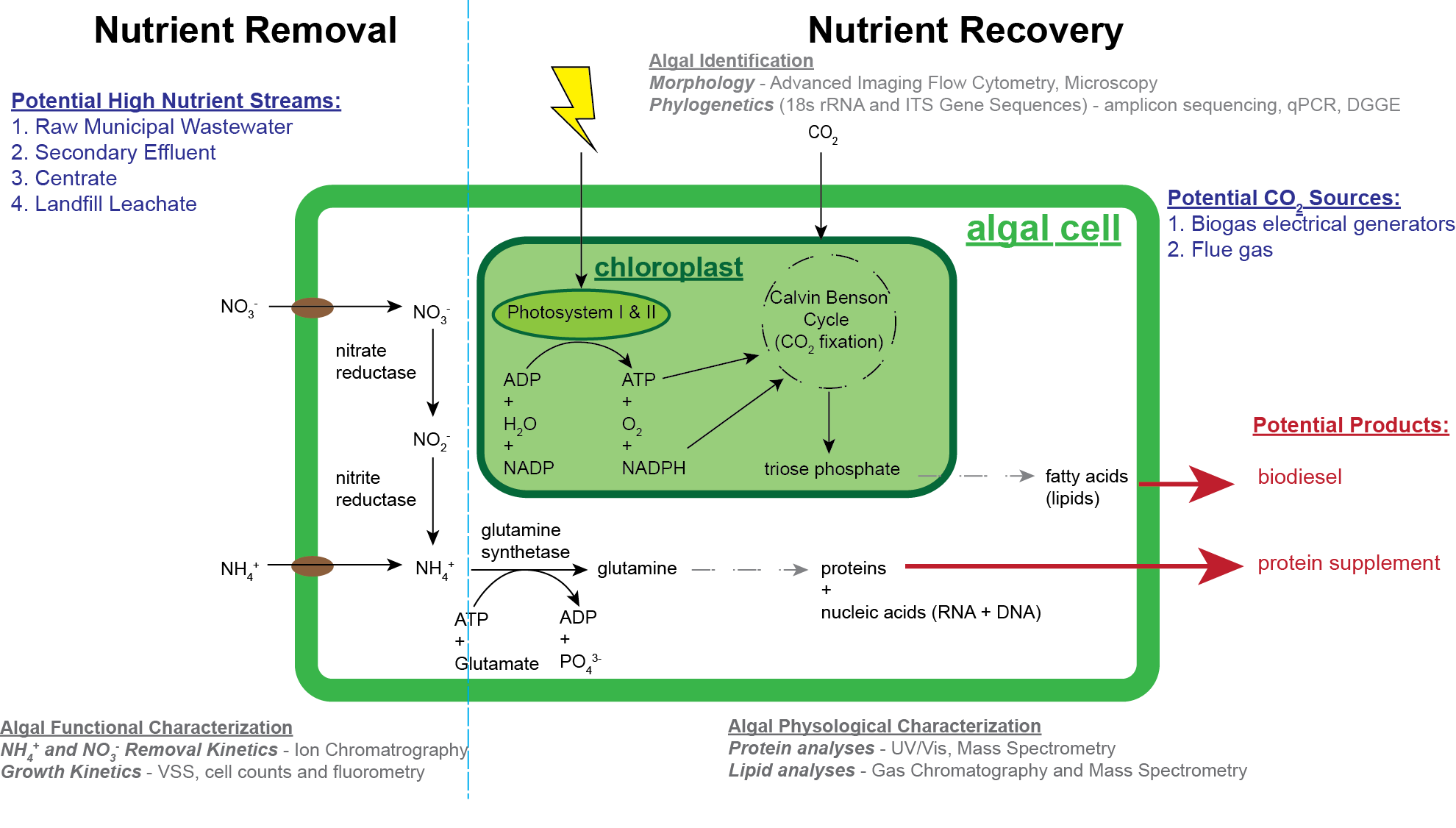Ongoing Algal Projects
The Sales Lab, in collaboration with Professor Mira Olson, are investigating the use of algae to remove nitrogen from landfill leachate. A consortium of algae and bacteria are being studied for their ability to grow on landfill leachate at different scales (PDF Link / Journal Link), as well as their ability to remove nitrogen Science Direct. In addition to algal species, such as Chlamydomonas reinhardtii, Volvox cateri, and Scenedesmus obliquus the microbial consortium included Cyanobacteria, including Synechoccus, and hundreds of bacteria inluding ammonia-oxidizing bacteria (AOB), nitrite-oxidizing bacteria (NOB) and anaerobic ammonium oxidizing (anammox) bacteria (PDF Link / Journal Link).
Algal biotechnologies for energy and resource recovery from waste streams
With the US EPA encouraging states to develop numeric water quality
standards for nitrogen and phosphorous, many municipalities are
investigating the implementation of new treatment strategies,
including algal biotechnologies, to enhance their capability to remove
these nutrients. Like most microorganisms, algae possess mechanisms to
uptake nitrogen from the environment for growth. Algae remove
dissolved nitrogen species from water by assimilation of either NH4+,
NO3-, or organic nitrogen into their biomass, usually for the
synthesis of proteins and nucleic acids. Therefore, the growth and
harvesting of algal biomass represents a potential strategy for
improved removal of nitrogen from wastewater. With the potential to
use the harvested algal biomass as a valuable resource, such as a
protein supplement for livestock, as a feedstock for biodiesel
production, or as a feedstock of specialty chemicals, the
incorporation of algal biotechnologies at wastewater treatment plants
is an economically attractive nutrient treatment alternative.
Our research group is working on (1) developing algal biotechnologies to
treat landfill leachate and centrate from municipal wastewater
treatment plants, and (2) characterizing and identifying the algal
processes, at microscopic, molecular, and biochemical levels, using an
array of high-throughput culture-independent and culture-dependent
methodologies.

